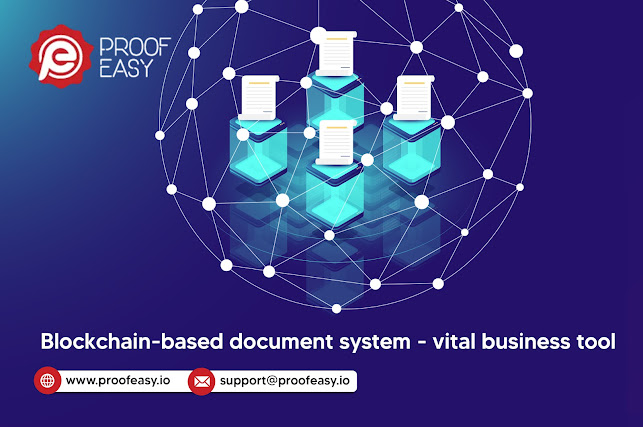Digital Credentials: The Internet’s Answer to Fake Certificates
The Internet has turned the world into a social village, eradicated geographical boundaries, and empowered the general population to use their fingertips for literally everything. However, with great convenience comes great opportunities for bad actors to exploit the Internet at every turn and use it for their convenience, effectively duping individuals, businesses, and government organizations.
While this may not seem like a big issue since no one wants to give up the Internet or blame it needlessly when it has bettered our lives in countless ways, cyberattacks are no longer phantom ghosts. They hold the same power of destruction as an unwarranted natural calamity that wreaks havoc in every direction.
Tired of these shortcomings and determined to improve the Internet without the weight of the baggage weighing it down, the World Wide Web Consortium (W3C) has come up with a unique and innovative solution: blockchain-powered digital certificates.
But what are they? Are they a sufficiently secure option? Moreover, who can use them? We’ll answer all these questions and more in this article. So, keep reading to find out!
What is a Digital Credential?
A digital credential is a digital replication of a physical certificate. It can also be issued fresh. A common example is the certificate you receive upon completing a course, establishing your capabilities. Or the driver license you receive after successfully taking the test to showcase your driving prowess.
However, a regular digital certificate comes with its fair share of drawbacks. First of all, they aren’t very secure and can be tampered with easily. This brings up a host of problems, including fake certificates, forgery, and duplication.
Plus, they’re no match for data breaches and can’t hold their ground without divulging all the sensitive information they carry. However, the Internet changed the name of the game with digital certificates powered by blockchain.
Verifiable credentials blockchain are hosted on this decentralized technology and are tamper-proof. You can also verify credentials at the speed of light and make authentication easier. While, in theory, these digital certificates are no different than the regular digital certificates, being hosted on the blockchain changes things for the better.
But what makes them a secure choice for businesses, especially digital ones?
How Secure is a Digital Credential?
Since blockchain is one of the most secure technologies on the market currently, it stands to reason that they can withstand the pressure put on by cyber bullies. A blockchain network’s transparent, trustless, decentralized, and superior security practices make it challenging to break into a network for bad actors.
Now, imagine if this ease of use and security mechanism were available for your business and could help you secure all digital documents? Wouldn’t it be great to issue and store certificates that are secured cryptographically, can’t be tampered with, and can be verified instantly on a blockchain network?
But what has made them wildly popular is the fact that these digital credentials can’t be issued by just anyone. The issuer must be authorized to issue them. This removes the danger posed by the fake certificate industry. Moreover, the issuer has to follow the rules and standards laid down in the Verifiable Credentials Data Model 1.0 to a T.
These standards have been established by the World Wide Web Consortium (W3C) after much deliberation and don’t have a work-around. According to the rules in the data model, a verifiable credential must be tamper-proof. It should be secure and impossible to take advantage of. This rule takes care of the security aspect.
But what about the other problems plaguing the Internet? What about privacy and authenticity?
The W3C has taken care of these aspects, too. They state that a digital credential will only be considered as such if it can be instantly verified by machines. Moreover, the consortium aims to give users more power and control over their data since a data breach hurts them the worst. So, a digital credential must also employ privacy-enhancing technologies like decentralized identifiers (DIDs).
After these criteria are fulfilled will a digital certificate be considered a digital credential. However, this begs the question: What’s preventing bad actors from getting in on the action to take their business to the next level and work their way around the seemingly impossible list of tasks to fulfill?
Well, like we mentioned, not anyone can issue a verifiable credential. They must be authorized to do so. And even if a fake organization finds a way to get authorized (an unlikely, but not far-fetched, scenario), the certificate will be easily caught at the verification stage.
Wondering how? A digital credential, like a regular digital certificate, must be signed by the issuing authority. Now, the sign can’t be a normal digital signature, which can be easily forged. Digital credentials take things a step further as they require the issuer to use their private keys to cryptographically sign a verifiable credential.
Now, when a holder (after they receive the issued digital credential from the issuer) presents a verifiable credential to a verifier for authentication purposes, the authenticator can check the certificate’s issue date, the authority who issued it, and if the certificate has been tampered with.
This ensures the certificate isn’t just a formal certificate that can be attacked any day, anytime, but a functional one that fulfills the standards painstakingly laid down by the W3C and can be trusted. The security model is almost like a complex web that’s been built to identify and track breaches and shortcuts.
Usher Your Business Into the Era of Internet Security
Reading about a technology and applauding the thought process behind it is wildly different than someone incorporating that very idea into their business. The Internet has given its answer, but are you ready to secure your documents, and, in turn, your business?
If you’re ready and are looking for solutions that make incorporation easy, look no further than ProofEasy. ProofEasy is an innovative and unique solution crafted by the pioneers in the blockchain industry who just want to see a world where cyberattacks are a thing of the past.
The solution leverages patented blockchain and QR code technologies, and facilitates the issuance of hassle-free digital certificates. These certificates are for EVERYONE. Educational institutions, training centers, businesses, government organizations, and other entities. Webinars and conferences, symposia and events, safety and compliance, regulatory bodies, workshops and bootcamps can also employ the solution.
The extreme ease-of-use and top-tier security aren’t the only benefits. You’ll also be set on the safety and compliance front. Since we follow practices similar to leading blockchain organizations, the digital credentials you generate through the platform will be compliant with the current regulations.
Plus, you get to customize the credentials per your preferences. You can even issue certificates in bulk. You can add the QR code wherever you think it would be best for verification and define the fields you’d like to personalize for each certificate.
The cost-savings, added flexibility, complete control over the issued documents, and ease of sharing only make ProofEasy-issued digital credentials more attractive. If that weren’t enough, ProofEasy’s credential verification services are secondary to none. You can verify credentials within seconds by simply scanning the QR code on a certificate.
So, don’t wait any longer. Contact the ProofEasy team today to secure your digital credentials. You can also sign up on the ProofEasy platform to get started!




Comments
Post a Comment